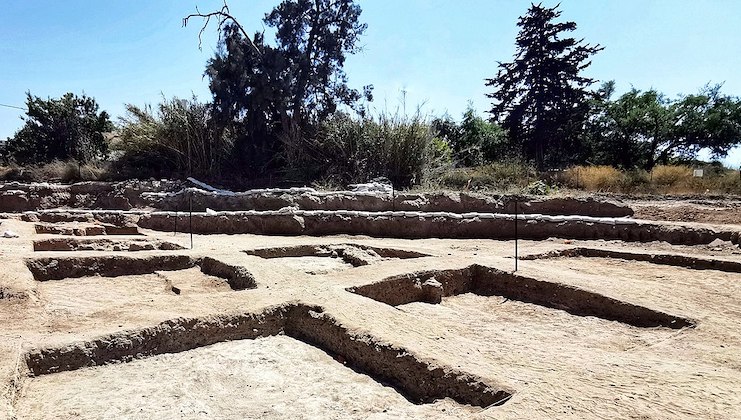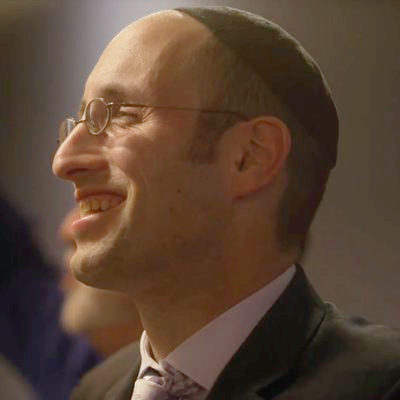What Zionism Owes Yavneh
How anti-Israel commentators have twisted the legacy of a great rabbi in service to politics.

On Hanukkah, as part of the country-wide celebration, the Israel Antiquities Authority (IAA) opened to the public a Jewish town excavated from the earth. Yavneh was where the Sanhedrin, the supreme religious and judicial body of rabbinic Judaism, took up residence in 70 C.E. Talmudic tradition accords the credit for the Sanhedrin’s survival to the sage Yohanan ben Zakkai, who fled Jerusalem before it fell. Today, an entire home has been uncovered in Yavneh, a home that clearly belonged to Jews who kept kosher and followed the Levitical laws of ritual purity. It may have been the domicile of a Sanhedrin member. Nearby, a cemetery may well bear the bodies of some of the most important rabbis in Jewish history.
All of Jewish ritual from the destruction of the Second Temple to the present has been defined by what ben Zakkai and his Sanhedrin ordained in Yavneh. It is, after Jerusalem, the most influential site in the history of Jewish law.
Now Yavneh’s significance is being celebrated and highlighted by Israeli archeologists. The excavators informed the media that the town represents “a direct voice from the past, from the period when the Jewish leadership salvaged the remaining fragments from the fall of the Temple, went into exile in Yavneh, and set about re-establishing the Jewish people there.” Simultaneously the IAA is staging an exhibit in northern Israel illustrating how the Sanhedrin preserved Judaism and the memory of Jerusalem. Rightly understood, these excavations and this exhibition are nothing less than the righting of a historic wrong, a recognition of all that modern Zionism owes to Yavneh, the Sanhedrin, and the man who oversaw its survival.
While rabbinic sources differ as to details of Yohanan ben Zakkai’s story, all agree as to certain facts. The rabbi fled Jerusalem while the Jewish rebels against the Romans were still fighting. He then met with the Roman authority and requested to be allowed to settle the Sanhedrin in Yavneh. But it is often unappreciated why he did so; why did he not hope for the miraculous salvation of the city, as it had been saved in the age of the Maccabees and so often in the Bible? The Talmud stresses that ben Zakkai was horrified by how the Jews in Jerusalem, riven by factionalism, were attacking one another inside the city even as they fought the Romans without. The last straw for ben Zakkai, according to the Talmud, was when the rebels burned their rivals’ food. This rabbinic text parallels another in Josephus’s contemporaneous history, The Jewish War. Josephus describes the horrific behavior of Jerusalem’s Jews toward one another: “It was as if to oblige the Romans they were destroying all that the city had laid up against a siege and hamstringing their own powers…. It was hunger that defeated them, a thing that could never have happened if they had not brought it about themselves.”
Jews lost Jerusalem by attacking one another. Nearly 2,000 years later, the moment would be cited by Menachem Begin in 1948 when he stood upon the ship Altalena as the forces of his political rival, David Ben Gurion, fired upon members of Begin’s Irgun, and Begin ordered his men not to fire back. Yohanan Ben Zakkai, seeing a Jerusalem where Jew slaughtered Jew, sensed the city would fall not only because of the brutality of the Roman emperor Vespasian’s assault, but because a Jerusalem that had eschewed Jewish unity had no right to expect salvation. He therefore set about preserving Jewish tradition, preparing for an age when Jews could claim Jerusalem again.
There is, sadly, a long tradition of Yavneh misinterpretation. The story of Yohanan ben Zakkai has been misused for years by those who seek to attack the modern Jewish state. The anti-Israel historian Arnold Toynbee asserted that ben Zakkai “took the momentous decision to break with the tradition of militancy which Judas Maccabaeus had inaugurated” in facing down the Seleucid Empire in 165 C.E. Ben Zakkai, in Toynbee’s estimation, “was proclaiming his conversion from the way of Violence to the way of Gentleness; and through this conversion he became the founder of the new Jewry which survived—albeit only as a fossil.” Decades later, Peter Beinart, arguing for a binational state, asserted that when Yohanan ben Zakkai “asked the Roman Emperor to give him Yavne[h], he was acknowledging that a phase of Jewish history had run its course. It was time for Jews to imagine a different path.”
This is preposterous. The very same Talmudic texts that describe ben Zakkai’s fleeing Jerusalem also inform us that he obligated Israel to commemorate Temple rituals in the hope that “meheirah yibaneh beit ha-mikdash,” that the Temple in Jerusalem would soon be rebuilt, believing that Jews must be eternally prepared for the moment when Jerusalem is restored as the capital of Judea, and of Judaism. Indeed, the very rabbinic faith of which Yohanan was patriarch and progenitor celebrated throughout the centuries the victories of Judas Maccabeus. One of the other requests ben Zakkai and others made of Rome was to allow them to preserve the office of Nasi, Jewish patriarch. It was held by descendants of King David and thus served as a tangible link to Jerusalem. The Jewish liturgy, formulated in Yavneh, pleads with God for the restoration of Jerusalem and the Davidic dynasty. Ben Zakkai’s last words on his deathbed were a request to prepare a throne for the spirit of a famous Davidic king coming to escort him to the next world; this, as Yaakov Herzog has put it, was meant “as a tangible symbol of faith that the Kingdom of Israel would surely be restored.”
Yet the hard truth is that it is not only antagonists to Zionism who have misunderstood the legacy of Yavneh; even some of the founders and leaders of modern Israel itself failed to understand him or properly celebrate him. Rabbi Joseph Soloveitchik once reflected with pain on the fact that Israel’s founders themselves identified Yohanan ben Zakkai with defeat:
When Haim Weizmann opened the Israeli Knesset on Tu BiShevat 5709, he rejected a list of all the dreamers and fighters who, with their self sacrifice, contributed to the miracle of the State of Israel. He began with the Katowitz conference and the Bilu movement in the 1880s; he managed to name Theodore Herzl, Max Nordau, Nahum Sokolow, Ahad Ha’am, Haim Nahman Bialik, Eliezer Ben Yehuda, Menachem Ussishkin, Louis Brandeis and Edmond de Rothschild, but he “forgot” to mention all the generations from R. Yohanan Ben Zakkai to R. Mendel of Vitebsk, who fasted and bemoaned the destruction of the Temple, who ignored all the persecutions, the mockery and laughter, who continued to hope that tomorrow the Temple would be rebuilt, and envisioned the great edifice that would tower over all the mountaintops.
Now we can celebrate the fact that the story is being told properly. The exhibition in the Galilee takes place on the wonderfully named Sanhedrin Trail, which marks the different sites in northern Israel where the judicial body sojourned after Yavneh. One of the many objects on display is a small lamp that might have been used for both Sabbath and Hanukkah. On the small stone vessel was carved a menorah, a tiny testament to the insistence of rabbinic Jews that they would preserve the memory of Jerusalem until it was restored. Now, finally, Israel is illustrating what the Jewish state owes to Yohanan ben Zakkai and his heirs. Citizens of the state reborn came on Hanukkah in 2021/5782 to walk in the footsteps of the Sanhedrin and understand why the candle of Judaism burns still.
This essay was originally published in Commentary.
How anti-Israel commentators have twisted the legacy of a great rabbi in service to politics.
How anti-Israel commentators have twisted the legacy of a great rabbi in service to politics.

